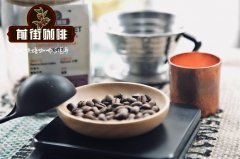Coffee beans are washed separately and what _ how to brew coffee beans _ characteristics of washing coffee beans

Professional coffee knowledge exchange more coffee bean information please follow the coffee workshop (Wechat official account cafe_style)
In every coffee production season, farmers collect the coffee fruit after picking and store it in a fixed open-air sink, which is filled with water, rotten branches and leaves, and density screening. Let's take a look at the process of washing coffee beans.
1. After picking, the fruit is poured into the sink, and the immature and overripe coffee fruit will float on the surface of the water. The ripe coffee fruit will sink to the bottom of the sink. In this way, the fruit is selected by natural water for the first time by using the buoyancy of water.
2. When the fruit enters the sink, the coffee fruit begins to soak and hydrolyze. The sink connects the ditch, and the coffee fruit moves continuously with the current of the ditch, rubbing against each other, and the peel and pulp begin to be loosened and separated.
3. Remove the pulp and peel of coffee mechanically, and the yellow mucous membrane of coffee is exposed.
4. Then the coffee beans begin to ferment. The time of fermentation is according to local conditions, the weather and climate of different producing areas are different, the time and effect of fermentation are different.
Central and South America ferment for 12 to 36 hours under the action of microbes in pools filled with water (except Brazil), and Kenya usually removes the gum by allowing pectin coffee to react naturally with microbes in the air.
5. After the fermentation is completed, the coffee with parchment will enter the flushing channel and rinse with a lot of water.
6. After the mucous membrane was removed, the coffee beans were dried.
First, drying directly by sunlight (fast drying speed and relatively low compactness of coffee fruit)
Second, the combination of direct drying and mechanical drying (for example, mechanical drying after 2 days of sun drying)
Third, dry in the shade (using natural wind and temperature to dry for a relatively long time)
Fourth, the combination of shade drying and sun drying (first shade drying and then sun drying).
It usually takes 10 days to one month to maintain the stability of water content, and the intermediate value of water content stability is about 12%.
7. Coffee with parchment will be put into a sack for "rest" for about 2-3 months.
8. The parchment with raw coffee beans removed is repackaged, exported and sold.
Washed coffee beans have natural characteristics: the coffee beans are transparent and green, the bean surface is smooth, the coffee beans are clean and sour. Because its washing method requires a lot of water, it is suitable for areas with abundant water resources (such as Africa, Central America, South America, Indonesia and Yunnan).
Qianjie coffee: Guangzhou bakery, the store is small but a variety of beans, you can find a variety of unknown beans, but also provide online store services. Https://shop104210103.taobao.com
Important Notice :
前街咖啡 FrontStreet Coffee has moved to new addredd:
FrontStreet Coffee Address: 315,Donghua East Road,GuangZhou
Tel:020 38364473
- Prev

What coffee beans are suitable for washing_How to ferment washed coffee beans Do you need to add enzymes or microorganisms
Professional coffee knowledge exchange More coffee bean information Please pay attention to the coffee workshop (Weixin Official Accounts cafe_style) coffee bean processing, is the coffee cherry picked from the fruit tree, processed into roasted green beans process. This process can also be seen as the fermentation process of coffee beans. Just as wine needs to be well brewed to produce a wine with excellent flavor, processing methods are very important
- Next

The process of washing coffee beans _ how to wash coffee beans _ the color of coffee beans will turn blue
Professional coffee knowledge exchange more coffee bean information please follow the coffee workshop (Wechat official account cafe_style) I am a coffee bean, from Huilan, a city in southwestern Colombia, here up to 1800 meters above sea level, with unique geographical conditions, my friends and I live a carefree life under the careful care of coffee farmers
Related
- What is the meaning of lactic acid fermentation with coffee bean treatment?
- How to judge the state of foam by sound?
- How does the latte pull out the unicorn pattern? Come to get for a little trick to improve the flower pull!
- Will flower pulling affect the taste of the latte?
- Do you know the history of coffee?
- The difference between honey treatment and sun washing what is raisin honey treatment?
- What kind of milk can a novice use to make coffee foam to keep the foam longer? The correct method and skills of milking tutorial sharing
- Why do washed coffee beans taste sour? Flavor characteristics of washed Coffee
- Introduction to the skill of how to practice the size and height of water injection around the circle of hand-brewed coffee
- How do beginners practice coffee flower drawing from scratch?

